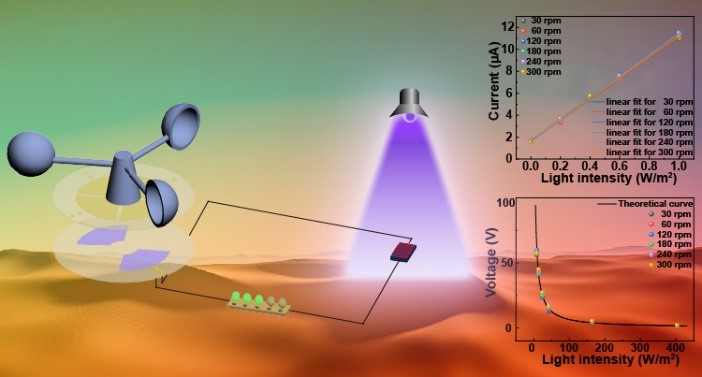Recently, the research result of Prof. Gang Cheng's group "A self-powered photodetector using a pulsed triboelectric nanogenerator for actual working environments with random mechanical stimuli" was published in the famous international journal of Nano Energy (IF=17.881, JCR District 1).
Article link: https://doi.org/10.1016/j.nanoen.2021.106518
The rapid development of the Internet of Things (IoTs), big data, artificial intelligence (AI), and etc. requires billions of sensors to obtain accurate and reliable physical information. As one of the most important sensors, photodetectors are widely used in automatic control, photometric measurement, laser stabilization, infrared imaging and other fields. However, most of the current photodetectors rely on external power supply, which not only increases the volume of the photodetection system, but also limits the mobility and independence of photodetectors. The usage of batteries not only limits the service life of photodetectors, but also brings problems such as high maintenance costs and difficulty in recycling. In addition, improper recycling may cause environmental pollution. Therefore, it is urgent to develop self-powered photodetection systems that do not rely on external power supply.
The first self-powered ultraviolet light detector was proposed in 2014. Since then, self-powered photodetection systems based on TENG and photodetectors have been widely reported. The existing self-powered photodetection systems are mainly based on impedance matching effect between TENG and photodetector. That is, when the resistance of the photodetector is in the medium impedance range of TENG (about 1 MΩ-1 GΩ), the change of light intensity causes the change of photodetector resistance, resulting in significant change of the output voltage/current of TENG. Hence, the output voltage/current of TENG can be used to represent light intensity. However, the output voltage/current of TENG are not only affected by load resistance, but also affected by working frequency of TENG. When the load resistance is fixed, the increase in working frequency of TENG will cause the increase in its output voltage/current. Besides, the mechanical stimuli are random in amplitude and frequency in actual working environment, so TENG cannot maintain constant frequency. The output voltage/current of TENG is simultaneously affected by two factors: mechanical energy frequency and resistance of the photodetector, which causes the output voltage/current of TENG cannot be used to represent light intensity and limits the practical application of self-powered photodetection systems.

A self-powered photodetector using a pulsed triboelectric nanogenerator for actual working environments with random mechanical stimuli
Different from conventional TENG that equivalent to the series of a voltage source and a variable capacitor, Pulsed-TENG is equivalent to the series of a voltage source, a fixed capacitor, and a switch. The internal equivalent impedance of Pulsed-TENG is zero, so it can maintain maximum output voltage regardless of load resistance and mechanical energy frequency. Here, we proposed a self-powered photodetection system based on Pulsed-TENG, where a rotating freestanding triboelectric-layer mode Pulsed-TENG (RF-Pulsed-TENG) is used as the power supply, a resistive-type photodetector as the sensor, and several LEDs as alarms. In this system, the light intensity can be characterized by the output current of RF-Pulsed-TENG, or the voltage of the photodetector after connected in series with a fixed resistor. In the current detection mode, as the light intensity gradually increases from 0 to 1 W/m2, the current increases from about 1.6–11.2 μA linearly. In the voltage detection mode, the output voltage is inversely proportional to the light intensity. As the light intensity gradually increases from 9 to 403 W/m2, the voltage across the photodetector decreases from about 60–1 V. Finally, based on the voltage detection mode, a self-powered photodetection system with visual display function is designed, and the light intensity can be displayed by the number of lighted LEDs. The self-powered photodetection system is not affected by the working frequency of TENG, which provides a feasible method for actual application of impedance matching based self-powered systems in the actual working environments where the frequency of mechanical stimuli is random.
Master student Tingyu Wang and Dr. Guangqin Gu are the co-first authors of the paper, and Prof. Gang Cheng and Prof. Zuliang Du are the co-corresponding authors of this paper. This work was supported by funding from the National Natural Science Foundation of China, the Science and Technology Department of Henan Province, China Postdoctoral Science Foundation, and Henan University.